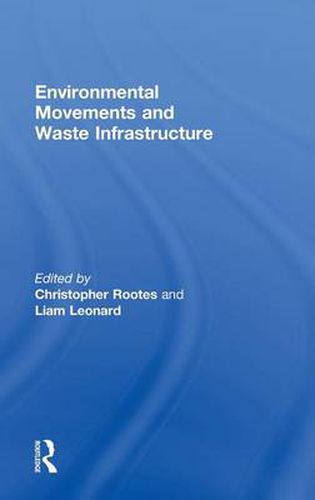Readings Newsletter
Become a Readings Member to make your shopping experience even easier.
Sign in or sign up for free!
You’re not far away from qualifying for FREE standard shipping within Australia
You’ve qualified for FREE standard shipping within Australia
The cart is loading…






As rates of consumption grow, the problem of waste management has increased significantly. National and local waste authorities seek to manage such problems through the implementation of state regulation and construction of waste infrastructure, including landfills and incinerators. These, however, are undertaken in a context of increasing supra-state regulatory frameworks and directives on waste management, and of increasing activity by multi-national corporations, and are increasingly contested by activists in the affected communities. Environmental Movements and Waste Infrastructure sheds new light on the structures of political opportunity that confront environmental movements that challenge the state or corporate sector. A series of case studies on collective action campaigns from the EU, US and Asia is elaborated in order to illuminate the similarities and differences between anti-incinerator protests within different states. Several contributions share a concern about cross-border or transnational waste flows. Each case study looks beyond its initial local frame of reference and goes on to interrogate assumptions about NIMBYism or localism, demonstrating the wider linkages and networks established by both grassroots campaigns and state and multinational agencies
This book was previously published as a special issue of Environmental Politics
$9.00 standard shipping within Australia
FREE standard shipping within Australia for orders over $100.00
Express & International shipping calculated at checkout
Stock availability can be subject to change without notice. We recommend calling the shop or contacting our online team to check availability of low stock items. Please see our Shopping Online page for more details.
As rates of consumption grow, the problem of waste management has increased significantly. National and local waste authorities seek to manage such problems through the implementation of state regulation and construction of waste infrastructure, including landfills and incinerators. These, however, are undertaken in a context of increasing supra-state regulatory frameworks and directives on waste management, and of increasing activity by multi-national corporations, and are increasingly contested by activists in the affected communities. Environmental Movements and Waste Infrastructure sheds new light on the structures of political opportunity that confront environmental movements that challenge the state or corporate sector. A series of case studies on collective action campaigns from the EU, US and Asia is elaborated in order to illuminate the similarities and differences between anti-incinerator protests within different states. Several contributions share a concern about cross-border or transnational waste flows. Each case study looks beyond its initial local frame of reference and goes on to interrogate assumptions about NIMBYism or localism, demonstrating the wider linkages and networks established by both grassroots campaigns and state and multinational agencies
This book was previously published as a special issue of Environmental Politics